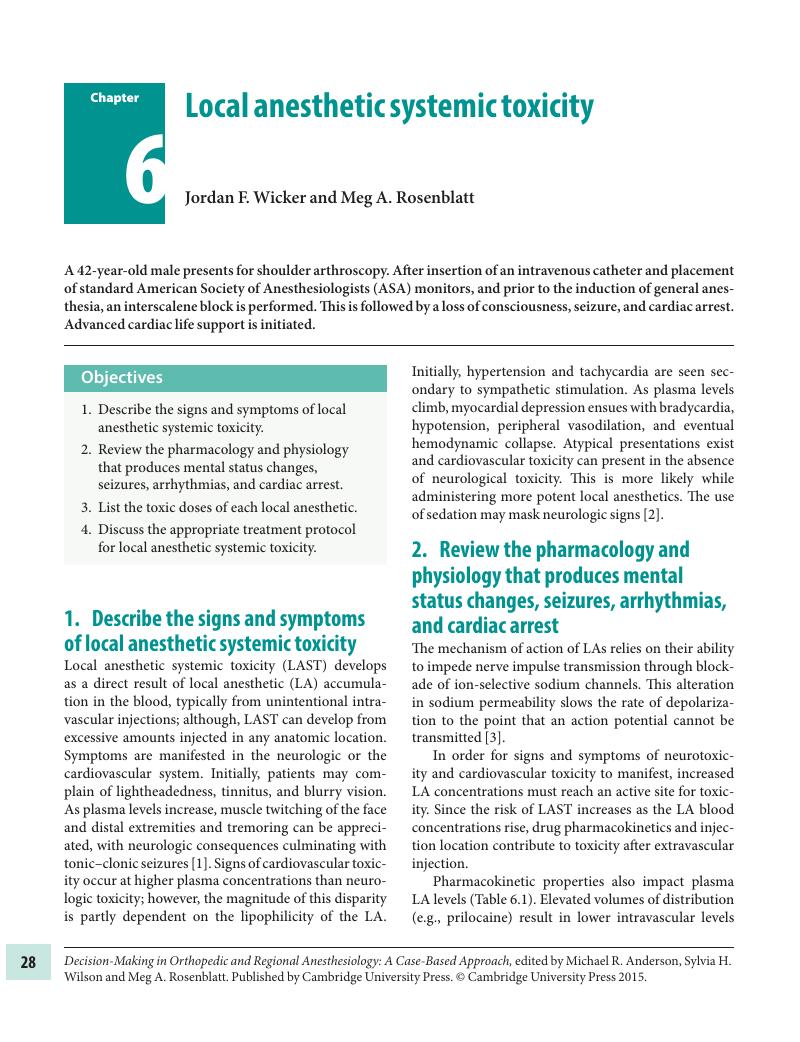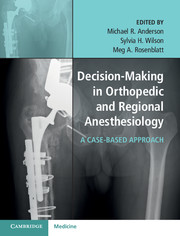Book contents
- Decision-Making in Orthopedic and Regional AnesthesiologyA Case-Based Approach
- Decision-Making in Orthopedic and Regional Anesthesiology
- Copyright page
- Contents
- List of contributors
- Preface
- Section 1 General considerations in regional anesthesia
- Chapter 1 Non-opioid analgesics in orthopedic surgery
- Chapter 2 Nerve localization techniques
- Chapter 3 Adjuncts to peripheral nerve blocks
- Chapter 4 Local anesthetics
- Chapter 5 Liposomal local anesthetics
- Chapter 6 Local anesthetic systemic toxicity
- Chapter 7 Post-procedure neurologic deficit
- Chapter 8 Pre-emptive analgesia
- Section 2 Special patient considerations
- Section 3 Total joint replacements
- Section 4 Orthopedic trauma
- Section 5 Sports medicine and hand surgery
- Index
- References
Chapter 6 - Local anesthetic systemic toxicity
from Section 1 - General considerations in regional anesthesia
Published online by Cambridge University Press: 05 October 2015
- Decision-Making in Orthopedic and Regional AnesthesiologyA Case-Based Approach
- Decision-Making in Orthopedic and Regional Anesthesiology
- Copyright page
- Contents
- List of contributors
- Preface
- Section 1 General considerations in regional anesthesia
- Chapter 1 Non-opioid analgesics in orthopedic surgery
- Chapter 2 Nerve localization techniques
- Chapter 3 Adjuncts to peripheral nerve blocks
- Chapter 4 Local anesthetics
- Chapter 5 Liposomal local anesthetics
- Chapter 6 Local anesthetic systemic toxicity
- Chapter 7 Post-procedure neurologic deficit
- Chapter 8 Pre-emptive analgesia
- Section 2 Special patient considerations
- Section 3 Total joint replacements
- Section 4 Orthopedic trauma
- Section 5 Sports medicine and hand surgery
- Index
- References
Summary

- Type
- Chapter
- Information
- Decision-Making in Orthopedic and Regional AnesthesiologyA Case-Based Approach, pp. 28 - 33Publisher: Cambridge University PressPrint publication year: 2015
References
- 1
- Cited by



